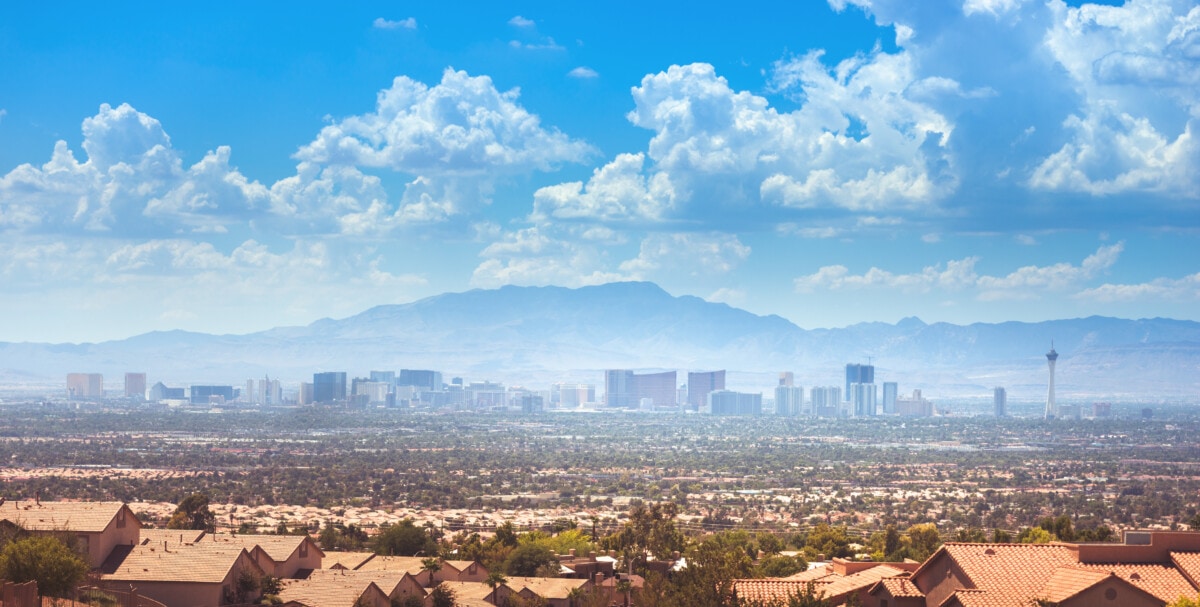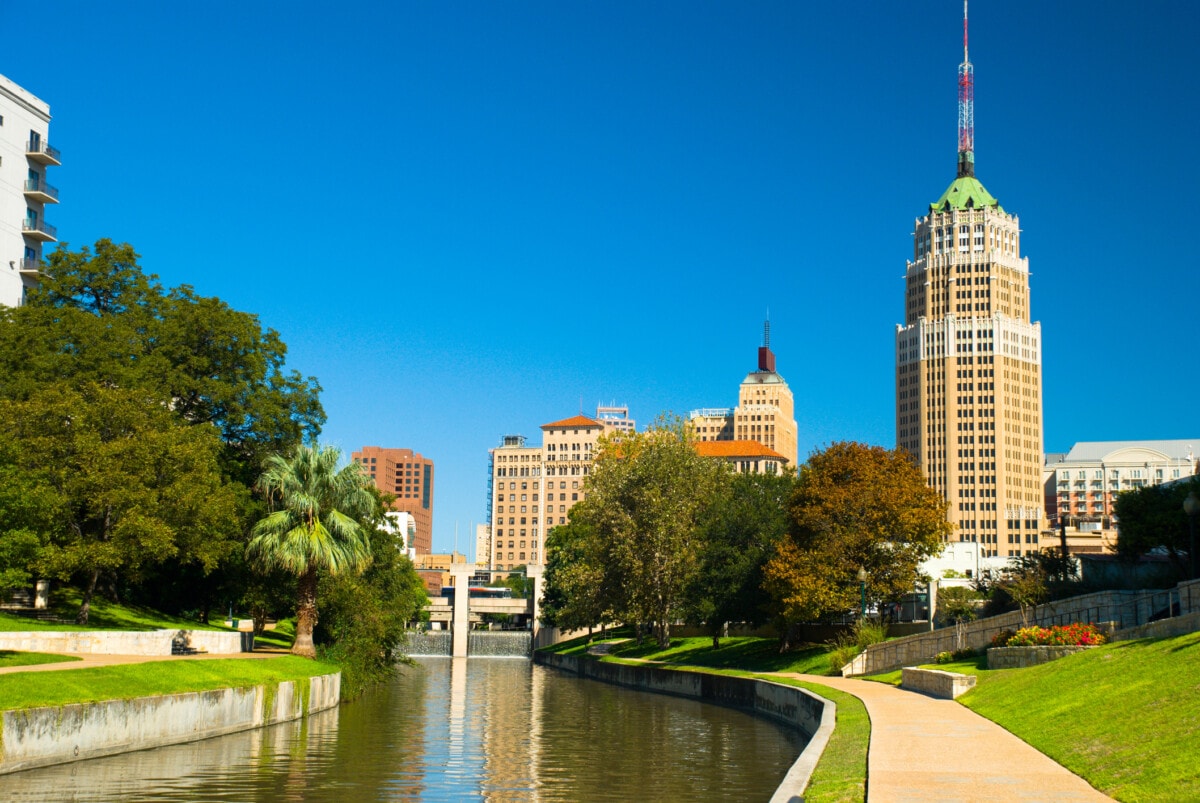2024 was the hottest year in human history. Heat waves affected every corner of the country, and July clocked in as the hottest month ever recorded. In fact, from 2023 through 2024, there were 14 consecutive months of record-breaking temperatures. This isn’t a new trend, either: The ten warmest years on record have all occurred during the last decade.
That’s not to say that hot weather isn’t enjoyable. Heat can be a welcomed change from the gloomy cold and rain of the winter. But as hot temps become increasingly dangerous, it’s important to be aware of where the heat is most intense.
As we head into another potentially record-breaking summer, Redfin has compiled a list of the hottest cities in the U.S. to help. Whether you’re heat-averse and looking for places to avoid, or a sun-chaser searching for your next home, read on to see which cities top the list – and how to stay safe in a warming world.
How we measure the hottest cities
To determine the “hottest” cities, we ranked U.S. cities with populations over 100,000 based on their average summer temperature. This way, we account for cities with hotter summers and cooler winters, rather than favoring tropical places that are warm year-round. We also included each city’s average annual temperature, though it didn’t factor into the rankings.
An average summer temperature combines a city’s average daily high and low temperatures from June-August. An average annual temperature combines a city’s average daily high and low temperatures from January-December.
What are the hottest cities in the U.S.?

1. Phoenix, Arizona
- Average summer temperature: 93.7°F
- Average annual temperature: 75.4°F
- Record highest temperature: 122°F (1990)
Phoenix is the hottest city in the U.S. The city gets so hot because of its location in the rapidly warming Sonoran Desert, year-round sunshine, and the urban heat island effect. And it’s only getting warmer.
2024 was the hottest year in the city’s history. Phoenix experienced an unprecedented 113 consecutive days with temperatures reaching at least 100°F, shattering the previous record of 76 days set in 1993. This extreme heat stretched into October and produced 70 days with temperatures above 110°F – more than triple the city’s average of 21 days.
A new reality is forcing the city to adapt to unbearable summer heat. Recent efforts include expanding the use of cool pavement – a pavement coating that reflects sunlight – and improving Phoenix’s Urban Tree and Shade Program. The city aims to cover 25% of the city with shade by 2030, using trees to naturally cool the environment.
Phoenix homes for sale | Phoenix houses for rent | Phoenix apartments for rent

2. Yuma, Arizona
- Average summer temperature: 92.8°F
- Average annual temperature: 75.9°F
- Record highest temperature: 124°F (1995)
Officially the sunniest city in the world, Yuma, AZ, is the second-hottest city in the U.S. Located in the heart of the Sonoran Desert, the Old Western town sees slightly higher daytime highs than Phoenix but cooler overnight lows (about 2°F), which is why its daily average temperature is lower.
Because it’s only 90 miles from the Gulf of California, Yuma also experiences more humidity than most desert cities, which can intensify heat stress and make temperatures feel even hotter.
Despite the summer extremes, Yuma remains a winter haven. Its warm, sunny winters attract around 90,000 part-time residents (snowbirds) each year. The region is known for its irrigated agriculture, especially lettuce and other cool-season crops that are hard to grow elsewhere during winter months.
Yuma homes for sale | Yuma houses for rent | Yuma apartments for rent

3. Las Vegas, Nevada
- Average summer temperature: 90.8°F
- Average annual temperature: 70.1°F
- Record highest temperature: 120°F (2024)
An entertainment oasis in the middle of the Mojave Desert, Las Vegas is the third-hottest city in the country. Temperatures in Las Vegas are slightly cooler than Phoenix and Yuma, primarily because it’s farther north. However, it has been warming rapidly, especially at night. An additional month of 100°F temperatures are anticipated annually by 2050.
Residents experienced this heat first hand in 2024 during a record-breaking summer. In July, Sin City saw seven straight days with highs above 115°F and three days topping 118°F, both records. A temperature of 120°F was recorded during this heatwave, which broke the all-time record by an astonishing 3°F.
The city’s rapid growth has added to the risk. Las Vegas’ metro’s population has nearly doubled since 2000, in part because it was a top migration destination for people searching for warm, sunny weather.
Las Vegas homes for sale | Las Vegas houses for rent | Las Vegas apartments for rent

4. McAllen, Texas
- Average summer temperature: 88.5°F
- Average annual temperature: 77.4°F
- Record highest temperature: 111°F (2023)
McCallen is a melting pot of culture in the heart of the Rio Grande Valley, boasting the hottest summers in Texas. McCallen feels the heat because of its southern latitude, proximity to the Chihuahuan Desert, and warming influence from the soupy Gulf of Mexico. This makes humidity a major issue, compounding the effects of already extreme heat.
Like most cities in 2024, heat was on full display in McCallen. It began in spring, with 115°F heat indices (what the temperature actually feels like) in early May. By July, they soared to a dangerous 124°F (100°F with 81% humidity), and remained very high in August. Multiple long-lasting heat domes were to blame.
Texas as a whole has warmed exceptionally quickly, becoming the hottest state in the country. Across the state, triple-digit heat has become the norm, with average temperatures now 6–12°F above normal.In fact, in the past ten years, there have been 1,000 more days of record-breaking heat than in a typical decade. 2025 looks to be continuing the trend.
McAllen homes for sale | McAllen houses for rent | McAllen apartments for rent

5. Laredo, Texas
- Average summer temperature: 88.0°F
- Average annual temperature: 74.6°F
- Record highest temperature: 115°F (1908)
Situated along the banks of the Rio Grande, Laredo is the fifth-hottest city in the U.S. It experiences similar temperatures to its southern counterpart, McCallen, but with less humidity and slightly cooler summers. Laredo’s location on the hot, dry plains further from the coast leaves plenty of room for heat waves to take hold, though, so extremely hot temperatures are more common.
Like most of Texas, Laredo saw a record-breaking summer in 2023, with July posting the hottest month in the city’s history. 2024 brought little relief, as triple-digit heat returned for weeks at a time. Laredo already sees the most 100°F days in Texas – an average of 78 and record of 146 – and prolonged heat waves are becoming more frequent, pushing the city to confront the growing risks.
Laredo homes for sale | Laredo houses for rent | Laredo apartments for rent

6. Brownsville, Texas
- Average summer temperature: 86.4°F
- Average annual temperature: 76.2°F
- Record highest temperature: 106°F (1984/2023)
Brownsville is the sixth-hottest city in the country. Located on the Gulf Coast just north of Mexico and only a few hundred miles from the Chihuahuan Desert, Brownsville benefits from both warm winters and hot summers. While milder than inland cities like Laredo or McAllen, Brownsville still faces serious heat risks.
Brownsville saw a record-hot year in 2023, with an especially hot summer. This warmth continued in 2024, with heat waves gripping the Rio Grande Valley in the spring and through the summer. The entire Gulf Coast baked for weeks, in part because the Gulf of Mexico experienced record-high temperatures.
The world’s oceans absorb ~90% of the heat from human-caused emissions. So as the Gulf continues to warm, cities like Brownsville are increasingly vulnerable to long, dangerous heat events.
Brownsville homes for sale | Brownsville houses for rent | Brownsville apartments for rent

7. Tucson, Arizona
- Average summer temperature: 86.4°F
- Average annual temperature: 69.7°F
- Record highest temperature: 117°F (1990)
Tucson, known as the Old Pueblo for its 10,000-year long native history, is the seventh-hottest city in the country. The city is situated in the Sonoran Desert and gets very hot, but it’s actually about five degrees cooler than Phoenix and sees nearly four more inches of rain. This is because the city sits about 1,500 feet higher in elevation and is nestled among five small mountain ranges.
In July 2024, Tucson logged two record-breaking days in a row – 111°F and 112°F – helping that summer to become the hottest on record. Abnormal warmth continued into the fall and winter, made worse by humidity.
Summer monsoons are common, but they don’t always bring relief – and flash flooding can follow intense heat. Fall and spring offer spectacular weather, but Tucson’s summers are becoming longer, hotter, and more dangerous.
Tucson homes for sale | Tucson houses for rent | Tucson apartments for rent

8. San Antonio, Texas
- Average summer temperature: 85.4°F
- Average annual temperature: 71.1°F
- Record highest temperature: 111°F (2000)
San Antonio is so hot because of its flat landscape, proximity to the warm and humid Gulf Coast, and heat waves from Mexico. The urban heat island effect is also a major factor for nearly 90% of the population, in some cases raising temperatures by an additional 9°F.
San Antonio’s heat was on display in 2024 – the hottest year in the city’s history. Blistering temperatures began in earnest in May, when the city saw a week of 95°F+ days. Then, in June, the heat index reached 117°F for an all-time high. To close out the summer, a record-breaking heatwave in August pushed temperatures past 100°F for a week.
Frequent extreme heat will likely become the norm in the near future; 100 degree days are now three-times more common in San Antonio than they were 30 years ago.
San Antonio homes for sale | San Antonio houses for rent | San Antonio apartments for rent

9. College Station, Texas
- Average summer temperature: 84.5°F
- Average annual temperature: 69.4°F
- Record highest temperature: 112°F (2000)
College Station, located between Austin, Waco, and Houston, has a fairly similar climate to all three cities. It’s less humid than Houston, a bit hotter than Austin, and warmer than Waco. Heat from the Gulf of Mexico and Mexico proper provide most of the warmth, made worse by frequent southerly (from the south) winds. The flat landscape means heat has no trouble flowing in.
As with most other Texas cities, College Station endured a scorching 2024. Warmth peaked in August, when heat indexes of 110°F led to nearly monthlong heat warnings and advisories.
College Station homes for sale | College Station houses for rent | College Station apartments for rent

10. Dallas, Texas
- Average summer temperature: 84.5°F
- Average annual temperature: 68.0°F
- Record highest temperature: 113°F (1980)
Adjacent to Fort Worth, Dallas is known for its football, cowboy culture, and hot summers. The heat comes from southerly winds from Mexico and the Gulf, leading to wet, muggy air that Texas is infamous for.
After a record-breaking summer in 2023, Dallas saw more of the same in 2024. The city reached 107°F in August and broke the 100°F barrier 23 times. High temperatures lingered into the fall, continuing a trend of longer, hotter summers across North Texas.
Dallas homes for sale | Dallas houses for rent | Dallas apartments for rent
What is the hottest place in the U.S.?
Death Valley National Park is the hottest place in the U.S. The desert basin has an average summer temperature of 101.3°F and an average summer high of 114.8°F. In 2024, it recorded its hottest summer on record, averaging 104.5°F – more than 3°F above normal.
Not only is Death Valley the hottest place in the country, but it’s also seen the hottest temperatures ever recorded on Earth. The park hit 134.0°F in 1913, which is recognized as the hottest temperature in history (although this has been disputed). It’s also seen the world’s second-hottest temperature of 130°F in 2020 and 2021 (unverified), and several similar highs recently.
The desert gets so hot because it sits ~280 feet below sea level and has some of the highest barometric pressure in the world. The nearby mountains also trap heat, acting as a furnace.
How are temperatures changing?
21 of the past 22 months have surpassed 1.5°C (2.7°F), the threshold above which scientists say will trigger irreversible climate impacts. While it won’t be official until that level is sustained over 20 years, we could already be living in the new normal.
This record heat has fueled more intense, long-lasting heat waves – the deadliest form of extreme weather – along with stronger and more frequent hurricanes, floods, and droughts. Research shows that without major cuts to greenhouse gas emissions, rising temperatures will likely make some locations uninhabitable to humans within the next 50-80 years.
Tropical and coastal areas face the greatest risk of unbearable heat due to their high humidity, which can lead to extremely high heat indices. This is why Southeastern U.S. cities have the highest heat risks in the country, with the Southwest close behind. In fact, 100% of properties in every city on this list have a major or greater heat risk.
How to prepare for extreme heat
As record-breaking temperatures become more common, it’s essential to take heat seriously – especially in the country’s hottest cities. Here are a few tips on how to stay safe when the mercury rises:
- Hydrate constantly: Don’t wait until you’re thirsty. Drink water regularly throughout the day, especially if you’re outside.
- Keep your home cool: Use fans, blackout curtains, and AC if available. Even a few degrees of improvement can make a big difference during a heat wave.
- Avoid peak heat: Stay indoors or in the shade between 10 a.m. and 4 p.m., when temperatures are usually the highest. Local authorities may provide more detailed recommendations. If you don’t have a way to cool down indoors, find a local cooling center or public space with air conditioning.
- Know the signs of heat illness: Dizziness, confusion, and rapid heartbeat can signal heat exhaustion or stroke. If you see anyone struggling with these symptoms, seek help immediately.
Methodology
This list contains average annual temperature data for cities with over 100,000 residents.
Data comes from the National Centers for Environmental Information (NCEI) and its parent administration, the National Oceanic and Atmospheric Administration (NOAA). Average summer temperatures are a three-month average based on data from June-August 1991-2020. Average annual temperatures are a twelve-month average based on data from 1991-2020.
.png)
 German (DE)
German (DE)  English (US)
English (US)  Spanish (ES)
Spanish (ES)  French (FR)
French (FR)  Hindi (IN)
Hindi (IN)  Italian (IT)
Italian (IT)  Russian (RU)
Russian (RU)  1 day ago
3
1 day ago
3








Comments